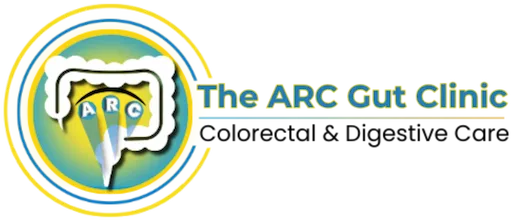Gallbladder stone removal is a medical procedure aimed at extracting hardened deposits known as gallstones that form inside the gallbladder, often triggering pain, nausea, or digestive issues. These stones can vary in size and may block the flow of bile, leading to serious complications if left untreated. Today, laparoscopy for gallbladder stone removal has emerged as the preferred approach, offering minimal scarring, faster recovery, and reduced post-operative discomfort.
What Does the Gallbladder Do?
The gallbladder is a small, pear-shaped organ located beneath the liver that plays a key role in digestion. It stores and concentrates bile a digestive fluid produced by the liver—that helps break down dietary fats in the small intestine. When food, especially fatty meals, enters the digestive tract, the gallbladder contracts and releases bile through the bile ducts.
- Bile Storage and Concentration: The gallbladder doesn’t produce bile but stores it between meals, concentrating it to enhance its digestive efficiency. This concentrated bile is more effective in emulsifying fats, aiding in smoother digestion.
- Assists Fat Digestion: During digestion, especially after consuming high-fat foods, the gallbladder contracts to release bile into the small intestine. Without this function, fat digestion becomes inefficient, leading to bloating, diarrhea, or nutrient malabsorption.
- Relevance to Gallstones and Removal: When bile contains excessive cholesterol or waste, it can harden into stones, blocking the flow of bile. Laparoscopy for Gallbladder Stone Removal is often performed when such blockages cause pain or inflammation.
- Non-surgical Alternatives and Clarifications: Many wonder, Can gallbladder stones be removed without removing the gallbladder?” In select cases with small stones, medications or shockwave therapies might help, but these options are limited and not always effective.
- Understanding Surgical Solutions: When symptoms persist or complications arise, how gallbladder stone can be removed becomes a concern. Minimally invasive laparoscopic surgery allows for gallbladder removal with fewer complications and a quicker recovery time.
- Can Gallbladder Stones Be Removed Without Surgery: While gallbladder stones can be removed in rare cases using non-surgical methods, these approaches carry a high risk of recurrence. Surgery remains the most definitive and widely recommended solution.
What Causes Gallbladder Problems?
Gallbladder problems commonly arise due to an imbalance in the chemical makeup of bile, which can result in gallstone formation or inflammation. These issues can disrupt digestion and trigger sharp abdominal pain, especially after meals rich in fats. Understanding the root causes helps determine how gallbladder stone can be removed or whether the organ needs to be taken out entirely.
- Cholesterol imbalance in bile: Excess cholesterol in bile can crystallize into stones, blocking ducts and causing pain or infection, often requiring laparoscopic removal.
- Obesity and rapid weight loss: Both increase bile cholesterol levels, making stone formation more likely.
- Gallbladder stasis: Poor emptying of bile leads to stagnation, encouraging stone development.
- Hormonal factors: High estrogen during pregnancy or hormone therapy raises bile cholesterol and slows gallbladder contractions.
- Diet patterns: High-fat, low-fiber diets disrupt bile balance and hinder gallbladder function.
- Removal misconceptions: While gallstones can sometimes be removed without gallbladder removal, surgery is often the most effective long-term solution.
What are the Symptoms of Gallbladder Problems?
Gallbladder disorders typically begin with mild or vague symptoms but can progress to severe abdominal pain and significant digestive complications. Recognizing these symptoms early is crucial in deciding how gallbladder stone can be removed or whether the gallbladder itself may need surgical removal. In many cases, treatment is paired with lifestyle counselling to prevent recurrence and manage symptoms.
- Common Misconceptions: Queries such as “Is it possible to eliminate gallbladder stones without taking out the gallbladder?” are frequently asked. While some treatments aim to preserve the gallbladder, in most symptomatic cases, gallbladder stones can be removed most effectively through minimally invasive surgery supported by lifestyle counselling for long-term relief.
- Upper Right Abdominal Pain: One of the most common signs is a sharp, cramping pain in the upper right side of the abdomen, often following fatty meals. This pain can radiate to the back or shoulder blade and may signal the presence of stones blocking bile flow.
- Nausea and Vomiting: Persistent nausea, especially after eating, is a frequent symptom. This occurs when the gallbladder cannot release bile properly, impairing digestion and leading to gastrointestinal discomfort.
- Indigestion and Bloating: Gallbladder dysfunction can cause early satiety, excessive gas, or a feeling of heaviness after eating. These symptoms are often mistaken for general digestive issues but may indicate underlying bile flow problems.
- Jaundice and Dark Urine: If a stone moves into the bile duct and causes blockage, it can lead to jaundice a yellowing of the skin and eyes. This is a serious sign that may require urgent intervention, often through laparoscopy for gallbladder stone removal.
- Fever and Chills: A blocked or inflamed gallbladder may lead to infection, presenting as fever, chills, or a general feeling of being unwell. This complication typically requires prompt medical attention.
What are the Advantages of Laparoscopic Gallbladder Surgery?
Laparoscopy for Gallbladder Stone Removal is widely preferred due to its minimally invasive approach, offering faster healing and fewer complications. It has become the standard treatment when gallbladder stones can be removed surgically, especially in symptomatic or recurrent cases.
- Clarity on Surgical Necessity: While many wonder, Can gallbladder stones be removed without removing gallbladder, laparoscopic surgery offers a definitive solution when non-surgical options fail. For those exploring how gallbladder stone can be removed effectively, this method ensures thorough removal with minimal complications.
- Minimal Invasive Technique: Unlike open surgery, laparoscopy involves only small incisions, typically less than half an inch. This reduces trauma to surrounding tissues, allowing patients to recover faster and with significantly less pain.
- Reduced Hospital Stay: Most patients undergoing laparoscopic surgery are discharged within 24 to 48 hours. The shorter hospitalization helps minimize healthcare costs and allows quicker return to daily activities.
- Lower Risk of Infection and Scarring: Smaller incisions reduce the likelihood of wound infections and result in minimal scarring. This is particularly beneficial for those concerned about cosmetic outcomes or long-term wound healing.
- Faster Recovery and Mobility: Patients can resume normal routines, including walking and light work, within a few days. This contrasts with open surgery, which may require weeks of restricted movement.
- Improved Surgical Precision: The laparoscopic camera provides a magnified, high-definition view of internal organs. Surgeons can operate with greater accuracy, which is essential in safely removing the gallbladder and ensuring no stone remnants are left behind.
How Should I Prepare for Laparoscopy for Gallbladder Stone Removal?
Preparation for laparoscopy for gallbladder stone removal is crucial for ensuring a safe procedure and smooth recovery. While patients often ask, Can gallbladder stones be removed without removing gallbladder, when surgery becomes necessary, following the right preoperative steps can make a significant difference.
- Undergo Pre-Surgical Evaluation: Doctors may recommend blood tests, imaging (like ultrasound or CT), and an ECG depending on your health status. These tests help rule out complications and ensure you’re fit for anesthesia and surgery.
- Discuss Current Medications: Inform your surgeon about all prescription and over-the-counter medications, including supplements. Blood thinners, for instance, may need to be paused to reduce bleeding risk during laparoscopy for gallbladder stone removal.
- Fasting Before Surgery: Typically, you will be asked to avoid eating or drinking anything for 6–8 hours before surgery. This helps prevent complications like aspiration during anesthesia.
- Plan for Post-Surgery Recovery: Though recovery is quick, arrange for someone to accompany you and assist for a day or two afterward. You may experience mild discomfort or fatigue, so rest and support are essential.
- Follow Specific Pre-Op Instructions: Some patients may need bowel preparation or special antibiotics. These protocols vary depending on whether the procedure is elective or done in response to acute symptoms.
- Mental and Lifestyle Preparation: Addressing lifestyle habits such as diet and hydration is often encouraged before surgery. While many consider whether gallbladder stones can be removed without removing gallbladder, understanding how gallbladder stone can be removed surgically includes preparing the body and mind for lasting outcomes.
How is Laparoscopic Gallbladder Removal Done?
Laparoscopy for gallbladder stone removal is a minimally invasive surgery used to treat gallbladder-related complications, especially when stones obstruct bile flow or cause inflammation. While some may wonder, Can gallbladder stones be removed without removing gallbladder, laparoscopic removal offers a complete and lasting solution when conservative methods are ineffective.
- Anaesthesia: The surgery begins under general anaesthesia, keeping the patient unconscious and pain-free.
- Small incisions: 3–4 tiny cuts allow insertion of instruments and a camera for a magnified view.
- Abdominal inflation: Carbon dioxide gas creates space for safe and precise surgical movements.
- Gallbladder removal: The gallbladder is detached and removed through one incision, with debris cleared.
- Closure and recovery: Gas is released, cuts are closed, and most patients walk within hours.
- Alternatives: Non-removal methods are rarely suitable for recurring or symptomatic gallstones.
What Are the Options If Laparoscopic Gallbladder Removal Is Not Possible?
While laparoscopy for gallbladder stone removal is the standard approach, certain medical conditions or complications may prevent its use. In such situations, alternative treatments are considered based on overall health, severity of symptoms, and the presence of complications like infection or scarring.
- When laparoscopy isn’t possible: Conditions like severe inflammation, infection, or scarring may require alternative treatments.
- Expert decision-making: While gallstones treatment can sometimes be removed without gallbladder removal, lasting relief usually needs surgery.
- Conversion to open surgery: Used when laparoscopy is unsafe, Is hernia surgery dangerous? offering better access in complex cases.
- Medical management: For high-risk patients, symptoms are controlled with medication, diet changes, and antibiotics.
- Endoscopic removal: ERCP can clear bile duct stones without removing the gallbladder in select cases.
- Non-surgical options: Oral bile acids may dissolve small stones but are slow and limited in effectiveness.
- Risks of delay: Avoiding surgery can lead to pain, infection, or gallbladder rupture, requiring close monitoring.
Conclusion
Laparoscopic gallbladder removal remains the most effective and patient-friendly option for treating symptomatic gallstones. With benefits like minimal scarring, faster recovery, and reduced postoperative discomfort, it offers a clear advantage over traditional surgical methods. While non-surgical approaches exist, they are often temporary and not suitable for everyone. Early diagnosis and timely surgical intervention can prevent serious complications such as infections or bile duct obstruction.
For expert evaluation and personalized treatment options, trust the skilled specialists at The Arc Gut Clinic, where advanced technology and compassionate care come together to deliver the best outcomes in digestive health.
Read Also: Parastomal Hernia Treatment in Chennai




